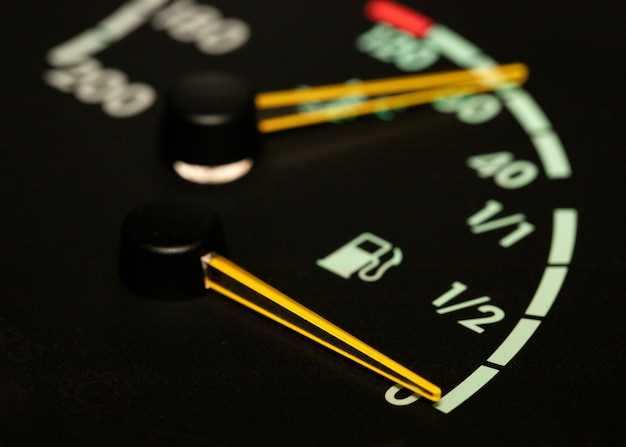
High-speed cornering is a critical skill that distinguishes proficient racers from their competitors on the track. Achieving optimal control while navigating tight turns at breakneck speeds can significantly influence lap times and overall performance. Understanding the intricacies of body positioning, steering input, and throttle modulation is essential for mastering this aspect of racing.
One of the key components of high-speed cornering is the driver’s ability to maintain control over the vehicle’s dynamics. This involves not only the precise timing of braking and acceleration but also an acute awareness of the car’s traction limits. Effective cornering requires a delicate balance between aggression and finesse, demanding that racers remain calm and focused even under intense pressure.
In this article, we will explore advanced techniques and strategies to enhance your cornering abilities. From understanding the ideal racing line to the importance of weight transfer, we will equip you with the knowledge needed to propel your racing skills to new heights. By refining your high-speed cornering techniques, you will pave the way for improved lap times and a competitive edge on the track.
Understanding Weight Transfer for Optimal Grip

Weight transfer plays a crucial role in achieving optimal grip during high-speed cornering. As a vehicle navigates a turn, the forces at work cause a shift in weight from one side of the car to the other. This transfer can significantly impact tire contact with the road, directly influencing traction and control.
When entering a corner, the braking forces initially shift weight to the front tires. This increases grip on the front end, allowing for better steering response. However, excessive weight transfer can lead to understeer if the front tires exceed their traction limit. Understanding this dynamic helps drivers optimize their braking techniques to maintain control throughout the entry phase.
As the racer accelerates through the corner, weight shifts again, transferring load to the rear tires. This shift enhances rear grip, which is crucial for maintaining stability while exiting the turn. However, abrupt acceleration can cause the rear tires to lose traction, leading to oversteer. Mastering throttle control during corner exits allows racers to harness this weight transfer effectively.
The balance of weight transfer is also affected by car setup, including suspension stiffness and alignment. Softer suspension setups tend to allow more weight shift, promoting grip but potentially sacrificing responsiveness. Conversely, stiffer setups can provide quicker steering response but may struggle in maintaining adequate tire contact under heavy loads. Understanding these effects enables racers to tailor their vehicles for optimal performance.
Practicing smooth inputs–whether in steering, braking, or accelerating–will enhance a driver’s ability to manage weight transfer. By doing so, racers can maintain better control, ensuring that all four tires remain as close to their grip limits as possible throughout the cornering process. This balance is key to mastering high-speed cornering techniques and achieving competitive lap times.
Adjusting Throttle Control in Fast Corners
Effective throttle control is crucial for navigating fast corners with precision and speed. Understanding how to modulate the throttle can significantly impact your cornering performance. At high speeds, the balance between acceleration and grip becomes delicate, requiring an intuitive feel for the car’s dynamics.
During the initial entry into a corner, it is essential to gradually reduce throttle input to maintain stability. Abrupt changes can lead to loss of traction and result in understeer or oversteer. Aim to ease off the throttle smoothly as you approach the apex, allowing the weight to shift forward and maximize front-end grip.
As you reach the apex of the corner, start to apply throttle progressively. This should be a controlled increase, ensuring you do not overwhelm the tires’ grip. The objective is to find the throttle sweet spot where the car confidently accelerates while maintaining a balanced attitude. A common technique is to visualize a gradual increase in throttle as you unwind the steering, which promotes stability and sets up for an optimal exit.
Use of electronic aids, such as traction control, can assist in managing throttle application, but relying solely on these systems can hinder the development of your driving skills. It is vital to cultivate a keen awareness of how your inputs affect the vehicle’s behavior under varying conditions. Practicing throttle modulation will help you develop the instincts required to react to real-time feedback from the car.
Furthermore, experimenting with different throttle control techniques in various situations can enhance your adaptability. Factors such as track surface, tire condition, and weather can all affect grip levels and, consequently, your throttle application. Be prepared to adjust your inputs based on these variables to maintain optimal control throughout the cornering process.
In summary, mastering throttle control in fast corners demands practice and an understanding of vehicle dynamics. By focusing on smooth transitions and responsiveness, you can improve your cornering speed and overall race performance.
Perfecting Line Selection for Maximum Speed

In racing, the skill of cornering effectively relies heavily on the ability to select the optimal line through each turn. The ideal line is one that minimizes the distance traveled while allowing for maximum speed. Mastering this technique can significantly enhance performance on the track.
The first step in perfecting line selection is to understand the geometry of the corner. Analyzing the track layout is crucial; each corner has its unique characteristics that dictate the best approach. Generally, the objective is to enter wide, apex at the closest point to the turn’s inner edge, and exit wide again. This creates a straight-line effect, allowing for acceleration as early as possible.
Another key aspect is vision. Anticipating the corner before reaching it enables a driver to position the car appropriately. Aiming at the apex and using reference points around the track helps in maintaining the correct trajectory. It is essential to keep the eyes focused further down the track rather than directly in front of the vehicle.
Additionally, understanding the dynamics between speed and traction is imperative. Rounding a corner too aggressively can lead to a loss of grip, while being too conservative can cost valuable time. Finding the right balance requires practice and an awareness of the vehicle’s handling characteristics.
As drivers refine their technique, they should also consider the impact of tire wear and track conditions on line selection. Tires perform differently under various circumstances, and adapting the line based on grip levels can provide a competitive advantage. During practice sessions, experimenting with different lines can help in determining the most effective approach for race day.
In conclusion, perfecting line selection for cornering is a fundamental aspect of racing that can lead to higher speeds and improved lap times. By understanding corner geometry, maintaining focus, balancing speed and traction, and considering external factors, racers can enhance their overall performance on the track.
